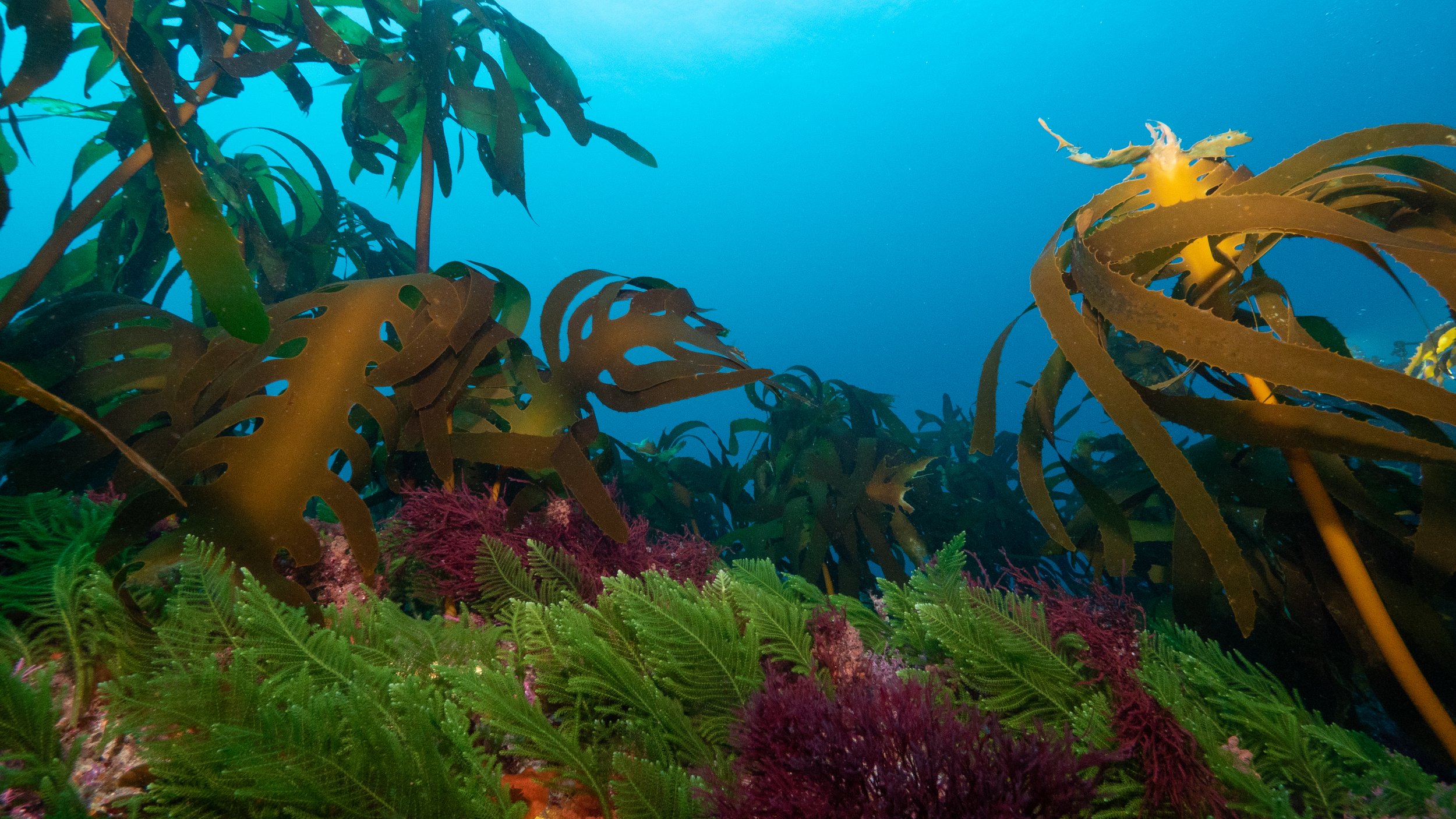values of the gsr
Reef of riches
The Great Southern Reef provides a myriad of benefits to humans. All these benefits have value and will hold importance for people, for a variety of reasons. For example, a commercial fisher might value the reef for the catch it provides, the income it brings and livelihood it sustains for their family. A traditional owner might value the reef for the connection to cultural practices that have been passed on for thousands of generations. An artist might value the reef for the awe and wonder it provides that inspires their creativity.
Valuing nature’s contributions
These are all examples of ecosystem services provided by nature for the benefit of society. Measuring ecosystem services enables us to put a value on the benefits provided by nature, that are so often taken for granted. It also allows us to compare these values in a common language that is commensurate with other ecosystems and parts of society, such as industry and government.
Unlocking the hidden value
Measuring ecosystem services can also help raise awareness and stewardship among the public about the important contribution nature provides to human society and supporting human well-being. This is particularly important for the Great Southern Reef. Although it spans over 8,000 Km of coastline and supports two thirds of the Australian population, there has been little work quantifying the extent and value of this ecosystem.
Key to conservation
Quantifying ecosystems services can help us to understand the importance of conserving and protecting ecosystems. It can also help decision-makers make informed choices about resource management and policies based on the range of benefits an ecosystem provides. It assists conservation planning by helping to identify areas that provide unique benefits, such as the presence of endangered species or threatened habitats.
Ecosystem services stocktake
Currently, the magnitude of benefits provided by the GSR remains unknown and we instead rely on a piecemeal understanding of a handful of benefits from across Australia. Scientists are now working to change this by conducting a systematic stocktake of the ecosystem services provided the Great Southern Reef.
Snapshot of GSR benefits
• over 17 million Australians who live within 50 Km of the reef
• 26 wild seaweed harvest companies,
• 115 tourism SCUBA operators,
• 1436 mapped dive sites,
• 18 million tourist visits each year,
• 16 temperate marine biology university programs,
• 43 books and films,
• key medical products,
• 23 tons of harvested seaweed,
• 186 marine protected areas,
• 3.2 million recreational fishers, and
• over 38 commercial fisheries with 20,000 tons of biomass taken each year.
An economic powerhouse
Scientists found that the total economic value of the Great Southern Reef was $11.56 billion each year, based on a limited number of services where enough information was available. These values included:
• commercial fishing (producer surplus - $33.2 million),
• carbon sequestration (avoided damages - $37.8 million),
• nutrient cycling (avoided damages - $6,484 million),
• recreational fishing (consumer surplus - $1,668 million),
• diving and snorkelling (consumer surplus - $403 million),
• other recreational activities (consumer surplus $1,836 million), and
• the existence value (consumer surplus - $1,096 million).
Scientists found that the total economic value
of the Great Southern Reef
was $11.56 billion each year.
What was measured?
To compile the services provided by the Great Southern Reef, scientists used the Common International Classification of Ecosystem Services (CICES) framework. Under this framework, ecosystem services are classified into four broad groups, based on the type of benefit provided:
Provisioning services
Provisioning services are the goods that humans directly extract from ecosystems. Fisheries catch is an example of a provisioning service on the GSR.
Regulating services
Regulating services are the benefits that ecosystems provide by regulating natural processes and ecological functions. Examples of regulating services include carbon sequestration, climate regulation, nutrient uptake.
Cultural services
Cultural services are the non-material benefits people obtain from ecosystems. These services include the spiritual, aesthetic, and recreational values that people place on nature and the landscape, as well as the cultural heritage and identity associated with places and landscapes.
Habitat services
Habitat services refer to the provision of suitable living conditions for wildlife and other organisms. Habitat services can be valued for their existence and ability to provide suitable food, shelter, breeding and recruitment habitats for species within the ecosystem.
How were values measured?
A challenge when quantifying the benefits provided by ecosystems is to wrangle them into common comparable metrics. How does one compare the value of cultural history and practices that have continued for thousands of generations with the value of contemporary tourism on the Great Southern Reef?
Beyond economics
In many cases these benefits cannot be distilled into a single metric, either because the values are incommensurable or because the information is simply unavailable. So while all these benefits do exist alongside one-another and contribute to the multitude of ‘values’ provided by the ecosystem, they are not necessarily reflected in economic metrics of value.
Exploring economic metrics
In cases where there is information available and the service is commensurable, economic metrics can be used to represent the value of ecosystem services. Two increasingly common approaches are Natural Capital Accounting and Welfare Economics.
Accounting for nature’s wealth
Natural Capital Accounting (NCA) is an umbrella term that covers accounting frameworks to measure the stocks of natural capital and its flows to economy and society. A NCA approach recognises the importance of the environment as an asset that needs to be properly managed and conserved, so that its contributions (through services) may continue to benefit people. There are several NCA approaches, including the internationally accepted standard UN System of Environmental-Economic Accounting (SEEA).
Beyond the market
A complementary approach for evaluating the contribution of ecosystem services to people is Welfare Analysis. Welfare Analysis approaches includes the capacity to integrate intangible or non-material values, termed ‘non-market values’, in ways that make them commensurate with other market-based values.
This project is supported with funding from the Australian Government under the National Environmental Science Program
Further reading






















